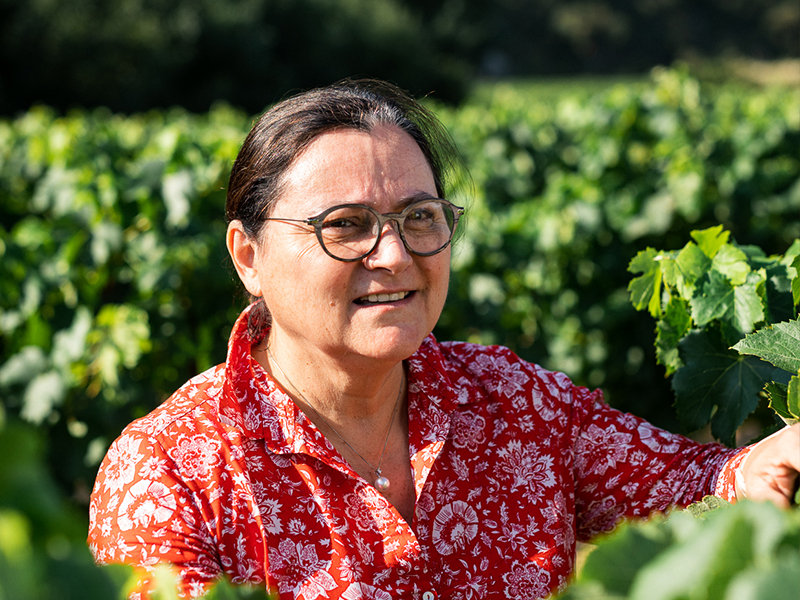The Languedoc region’s
exceptional diversity
The wide variety of wines the Les Jamelles range boasts is only possible due to the diversity of the terroirs and grape varieties that the Languedoc region has to offer. This unique area of production, covering approximately 223,000 hectares, produces 12 million hectolitres of wine per year. It is one of the world’s largest winegrowing regions!
An immense amphitheatre facing the sea, the Languedoc-Roussillon is a multi-faceted region, shaped by coastal zones, mountains, crests and higher-altitude terroirs. Between the Pyrenees to the south-west, the Cévennes to the north-east, the Montagne Noire to the north-west and the Mediterranean coast to the south, the 58 grape varieties authorized by the IGP Pays d’Oc label benefit from a wide diversity of ideal locations that allow them to express their full potential.
Within this immense region, let us set off on a discovery of the production areas that Catherine and her team have selected over the course of the last twenty-five years. These are the terroirs that truly showcase the different grape varieties and bring out their best! Enjoy browsing!
Discover our terroirs

Terroir selection,
the secret to the wine’s balance
The majority of Les Jamelles wines are crafted from a single grape variety. However, the grapes for each wine do not come from the same terroir, quite the contrary! It is precisely the selection of grapes from different terroirs, followed by the blending of each individual cuvée that we are able to obtain the balance, typicity and rich aromas and flavours that Les Jamelles wines are renowned for. Let’s have a look at this subtle balancing act that Catherine and her team are faced with each year, taking the example of our Viognier…
“Our Viognier hails from 4 distinct terroirs: the Thau lagoon basin, the slopes of the Orb Valley, the Hérault Valley’s mid-slope vineyards and the dried-up marsh of Marseillette.
The first terroir lends a saline profile to the wine while the second adds roundness, the third richness and the fourth freshness and pleasing fruit flavours such as pear, apricot and peach. In a glass of Les Jamelles Viognier, each of these Languedoc terroirs shines through and the overall blend results in a perfectly balanced, delectable wine in which the typicity of each of the grape varieties can be appreciated!”

A la découverte de nos terroirs
La sélection des terroirs,
le secret de l’équilibre des vins
La plupart des vins Les Jamelles proviennent d’un seul cépage. Cependant, pour un même vin, les raisins ne proviennent pas d’un seul terroir, bien au contraire ! C’est justement la sélection de différents terroirs – et ensuite l’assemblage des cuvées produites – qui va permettre d’obtenir l’équilibre, la typicité et la richesse aromatique des vins Les Jamelles. Intéressons-nous à ce subtil jeu d’équilibriste auquel se prêtent Catherine et son équipe chaque année avec l’exemple du Viognier …
« Notre viognier provient de 4 terroirs distincts : le Bassin de Thau, la Haute-Vallée de l’Hérault, les mi-coteaux héraultais et l’Etang de Marseillette. Le premier apporte un côté salin au vin, le second de la rondeur, le troisième de la richesse, et le dernier de la fraicheur et de jolis arômes de fruits tels que la poire, l’abricot et la pêche. Dans un verre de viognier Les Jamelles, chacun de ces terroirs du Languedoc s’exprime et leur association donne un vin parfaitement équilibré et gourmand, dans lequel on reconnaît bien la typicité de chacun des cépages ! »
interactive map
Lorem ipsum
Legend
Our wines

Cabernet Sauvignon
The grapes come from four meticulously selected terroirs.
The environs of Narbonne to lend richness and opulence to the wine; the Aude River plain for length and structure; those from the slopes of the Orb Valley contribute velvety tannins, richness and complexity; and finally, the western Aude, under whose oceanic influence freshness dominates. Subtle blending allows the cuvées from these four terroirs to yield an elegant, complex wine with pleasing velvetiness and lovely length on the palate.The grapes come from four meticulously selected terroirs: the environs of Narbonne to lend richness and opulence to the wine; the Aude River plain for length and structure; those from the slopes of the Orb Valley contribute velvety tannins, richness and complexity; and finally, the western Aude, under whose oceanic influence freshness dominates. Subtle blending allows the cuvées from these four terroirs to yield an elegant, complex wine with pleasing velvetiness and lovely length on the palate.

Cabernet-Merlot
The grapes are mainly sourced from two terroirs: the foothills of the Montagne Noire, north of Carcassonne, for freshness and spicy notes, and the Aude River plain whose grapes lend length and structure to the wine

Carignan
Our Carignan hails from small plots of vines that are over a hundred years old with low yields. These vines were planted according to the traditional Languedoc method and are cultivated :
• on the Aude River plain, in the Minervois region, on alluvial terraces strewn with rounded stones, for added length and structure,
• in the foothills of Mount Alaric, in the north of the Corbières mountain range, for roundness and complexity.

Carignan Le Beillou
This Carignan comes from century-old vines
planted in soil composed of layers of clay and eroded rocky outcrops in the southwestern Minervois region. The roots of these old vines plunge deep down to reach the moisture they need to ensure that the grapes ripen slowly and evenly.

Chardonnay
Six terroirs may go into the production of a Les Jamelles Chardonnay! Cool, mineral or saline terroirs, such as the Thau lagoon basin, the upper Aude valley near Limoux, or the western Aude; terroirs that lend richness and roundness such as the environs of Narbonne or the slopes of the Orb Valley; or the Aude River plain whose grapes contribute tautness and length.

Chardonnay Bio
The grapes were cultivated in vineyards located on the slopes along the Gard River, in soil strewn with rounded stones in the northeastern Languedoc, where the hot Mediterranean climate is tempered by cool, humid nights and the Mistral wind. Pruning is carefully monitored and yields are limited – approximately 30% lower as compared to conventional viticulture.

Chardonnay-Viognier
The Chardonnay vines selected for this blend are located near Limoux in the Upper Aude Valley and lend freshness and minerality to the wine. The Viognier grapes come from the Minervois region, more precisely the dried-up marsh of Marseillette, and also add freshness to the wine along with fruity aromas and flavours (pear, apricot, peach).

Cinsault
The grapes used to craft this Cinsault are sourced from three terroirs: those along the coast near Béziers, where the hot climate and proximity to the sea lend roundness and freshness, while the grapes from the Herault’s mid-slope vineyards add richness, and finally those from the environs of Narbonne give opulence to the blend.

Clair de Gris
Some of the grapes come from our own vines in Ouveillan, halfway between the Montagne Noire and the Mediterranean coast, in the environs of Narbonne. The soil composed of limestone and loamy clay and is strewn with rounded stones. In summer, the soil is very hot and proximity to the sea ensures that the roots remain cool, guaranteeing good balance between sugar and acidity. The rest of the grapes come from the Herault’s mid-slope vineyards. This very hot zone, also influenced by the Mediterranean Sea, encourages the production of rich, opulent wines.

Clair de Rose
The grapes for this wine are sourced from diverse terroirs: those from the Herault’s mid-slope vineyards, under the influence of the Mediterranean climate, yield rich, warm, sun-drenched wines; a little further to the south, the sandy alluvial soils around the Thau lagoon basin lend freshness and salinity; while further east, the calcareous clay soils in the environs of Narbonne, where the climate is dry and sunny, yield rich wines

Gewurztraminer
This Gewurztraminer hails from a plot of young vines located on the plain on the former Aude riverbed in the environs of Narbonne, where the clayey loam soil that contains a substantial quantity of gravel lends magnificent richness to the wine.

Grenache Gris La Lauze du Moulin
This white wine was crafted with Grenache Gris grapes sourced from one of our own plots located in the northwestern Corbières region, at the foot of Mount Alaric. The goblet-pruned, trellised vines grow on a gentle, south-facing slope. Gravelly calcareous clay soils lend the wine finesse along with rich aromas and flavours.

Grenache Blanc
The grapes come from vines planted at mid-slope in calcareous clay soil in the terroir of the central Corbières, between Mount Alaric and the Mediterranean coast.

Grenache Rouge
The grapes for this Grenache come from four meticulously selected areas: those from higher altitudes in the foothills of the Pyrenees lend richness to the wine; the grapes from Mount Alaric, in the northern Corbières region contribute roundness and complexity; those from the Aude River plain lend length and structure; while the Herault’s mid-slope vineyards, influenced by the Mediterranean, encourage good ripening of the grapes, lending warmth and opulence. Subtle blending allows the cuvées from these four terroirs to yield a wine with remarkable balance between richness and freshness.

Grenache Vallée de la Boulzane
This Grenache hails from a plot located near La Boulzane, a tributary stream of the Agly River, in the Haut-Roussillon. Planted in soil that is composed of stony black schist, the vines, which are over 80 years old, need to plunge their roots deep down in order to produce just a few incredibly concentrated bunches of grapes. Dry conditions and an altitude of 320 m allow the grapes to maintain good acidity.

Grenache-Syrah-Mourvèdre
The grapes hail from several terroirs, each contributing its specificities to the final blend: length and structure (vines on the Aude River plain), freshness and spicy notes (the foothills of the Pyrenees and the Montagne Noire), richness (the Bages lagoon, on the coast near Narbonne).

Malbec
The grapes comes from 3 terroirs :
• on the slopes of the Orb Valley, in the Hérault department, where the soil is very warm and strewn with rounded stones. These grapes lend depth and colour to the wine,
• in the western Aude department where the soil is cool and deep. The grapes, with their aromas and flavours of tangy red berries, lend finesse and freshness to the wine
• on the dried-up marsh of Marseillette whose slightly salty calcareous clay soil strewn with rounded stones, combined with the coolness due to numerous canals and the poplar trees that line them, allow the grapes to reach an exceptional level of phenolic ripeness, resulting in wines with lovely length.

Marsanne
Our Marsanne is sourced from three terroirs: the shallow soil on the slopes of the Orb Valley, poor calcareous clay soils on the Hérault’s mid-slope vineyards and calcareous clay soils on the Aude River plain.

Merlot
To obtain a wine with perfect balance that is typical of its varietal, the grapes are selected from five terroirs: the flatlands in the environs of Narbonne and the Aude River plain lend richness, length and structure; those along the coast near Béziers, opulence and freshness; while the vines located on the slopes of the Orb Valley and the Herault’s mid-slope vineyards contribute roundness, velvety tannins and freshness to the final blend.

Merlot Bio
The grapes are sourced from vineyards located on the slopes of the Gard River (soil strewn with rounded stones, climate tempered by proximity to the sea), and the coast near Béziers (calcareous clay soil, hot Mediterranean climate). Pruning is carefully monitored and yields are limited, approximately 30% lower as compared to conventional viticulture.

Méthode traditionnelle
The Pinot Noir and Chardonnay grapes come from the Limoux region, in the Upper Aude Valley. These late-ripening vineyards allow the grapes to reach aromatic maturity while maintaining moderate alcohol levels and obtain nice freshness.

Mourvèdre rosé
The grapes that go into the production of this Mourvèdre rosé hail from two terroirs:
the calcareous clay soils and dry, sunny climate in the environs of Narbonne yield rich wines boasting gorgeous aromas and flavours of red fruit, while the diverse soil profiles of the Aude River plain (calcareous clay, rounded stones, sandstone, limestone, marls) combined with a hot, dry climate lend structure and tautness to the wine.

Mourvèdre rouge
Our Mourvèdre comes from several carefully selected terroirs:
• we found some very exceptional vines that are between 15 and 30 years old, planted on slopes at an altitude of 50 m above sea level on the Mediterranean coast near the Bages lagoon, close to Narbonne. The calcareous, alluvial soil yields rich grapes that boast considerable freshness.
• the grapes from the areas near the foothills of the Montagne Noire and the central Corbières region add typical notes of spices and wild Mediterranean herbs to the wine.
• les mi-coteaux héraultais apportent quant à eux richesse et opulence.

Mourvèdre Les Traverses
This Mourvèdre comes from vines that are
approximately forty years old, which are planted in the
eastern Minervois region in gravelly, sandy soil that is well drained and relatively poor, which suits this varietal
particularly well. Southern exposure and moisture in the soil allow the grapes to reach optimal ripeness while maintaining perfect balance.

Muscat sec
Our Muscat grapes come from two terroirs:
the first being the Hérault’s mid-slope vineyards, whose poor, calcareous clay soils, Mediterranean climate and high heat encourage optimal ripening of the grapes, yielding opulent, rich, well rounded wines. The second terroir is the coast near Béziers, whose proximity to the sea contributes freshness and minerality to the wine.

Pinot Gris
Our Pinot Gris hails from two different terroirs:
• vines located on the Hérault’s mid-slope vineyards whose grapes lend richness and opulence to the wine.
• a particularly atypical terroir, the dried-up marsh in Marseillette, a small village in the Aude department. The slightly salty calcareous clay soil strewn with rounded stones, combined with coolness due to numerous canals and the poplar trees that line them, allow the grapes to reach an exceptional level of phenolic ripeness, resulting in wines with lovely length.

Pinot Noir
The grapes are sourced from four terroirs: the vines located on the Herault’s mid-slope vineyards and in the foothills of the Pyrenees lend richness and opulence, while the vineyards in the upper Aude valley contribute fruit, typicity and freshness, and those on the Aude River plain, length and structure.

Roussanne
Les Jamelles Roussanne grapes come from a vineyard whose vines are approximately twenty years old, located north of Béziers, on the slopes of the Orb Valley. The calcareous clay soils and pronounced alternation between hot days and cool nights lend roundness and richness to the wine.

Sauvignon blanc
Composed of grapes from five carefully selected terroirs, Les Jamelles Sauvignon Blanc derives its freshness and minerality from the Thau lagoon basin, the dried-up marsh of Marseillette, the Upper Aude Valley near Limoux, and the western Aude department. In some of these zones, temperature variations are very pronounced with extremely hot days and very cool nights, allowing for the development of sought-after citrus aromas and flavours; while the grapes that grow on the slopes of the Orb Valley, north of Béziers, lend roundness to the wine.

Syrah
The grapes for Les Jamelles Syrah come from four distinct terroirs: the slopes of the Orb Valley for complexity and richness, while the terroir at the foothills of Mount Alaric, in the northern Corbières, lends roundness and complexity; the clayey soil in the central Corbières region gives complexity and spice to the wine thanks to the deeply rooted vines. Finally, the foothills of the Montagne Noire lend freshness and richness.

Syrah Grenache
The majority of the Syrah and Grenache grapes come from the slopes of the Orb Valley, north of Béziers. The vines are planted in soil that overlies calcareous clay basalt streaks. This higher-altitude terroir, where the nights are cool, lends velvety tannins, roundness and richness to the wines it yields.
The rest of the grapes come from the foothills of the Montagne Noire, in the northern Minervois, where the vines grow in predominantly limestone soil.

Syrah Vallée de la Bretonne
The plot from which this Syrah hails is located
in the northwestern part of Corbières, at the foot of Alaric’s Mountain. Covering a gentle south-facing slope, it borders the La Bretonne stream. The soil, composed of alluvium and pebbly limestone, lends this wine power and substantial minerality.

Vermentino
The grapes hail from calcareous clay terroirs located near the Thau lagoon basin.

Vin Orange
The grapes come from vines planted in calcareous clay soil on gentle slopes in the foothills of the Montagne Noire. This hot terroir lends length and structure to the wine.

Viognier
The grapes for our Viognier are sourced from several terroirs, the main ones being the Thau lagoon basin and the dried-up marsh of Marseillette. Overlying the former deltas of the Aude and Hérault rivers, the first terroir features calcareous clay soil with rounded river stones, while the second terroir is rather atypical with slightly salty, loamy clay soil that is leached several times a year. These filtering soils combined with extremely high temperatures allow for optimal ripening of the grapes, the development of pleasing yellow fruit flavours, and lend freshness to the wine. The grapes from the Hérault’s mid-slope vineyards and the slopes of the Orb Valley contribute roundness and richness to the wine.
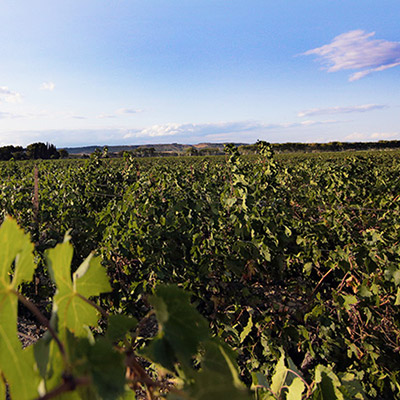
Environs of Narbonne
Limestone and clayey silt soil strewn with rounded stones lends opulence and richness to the wines.
Ripe black fruit (Merlot) Ripe fruit, roundness (Chardonnay); exotic fruit and citrus (Gewurztraminer) Red fruits, raspberry, grenadine. The wines hailing from this terroir: Chardonnay, Gewurztraminer, Mourvèdre rosé, Clair de Rose, Clair de Gris, Cinsault, Cabernet Sauvignon, Merlot
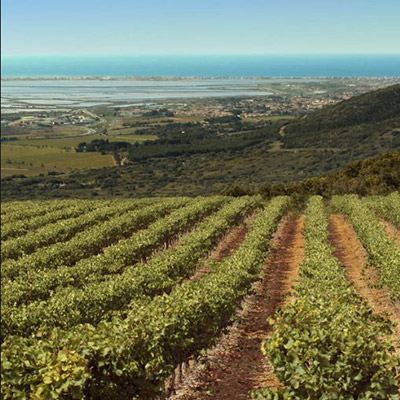
Thau lagoon basin
Sandy, alluvial soil. Alternating hot days and cool nights. Yields wines boasting salinity and freshness.
Citrus, gooseberry (Sauvignon blanc); pear, peach, apricot, melon (Chardonnay, Viognier) Grenadine, fruit drop candy. The wines hailing from this terroir: Viognier, Vermentino, Chardonnay, Clair de Rose, Sauvignon blanc
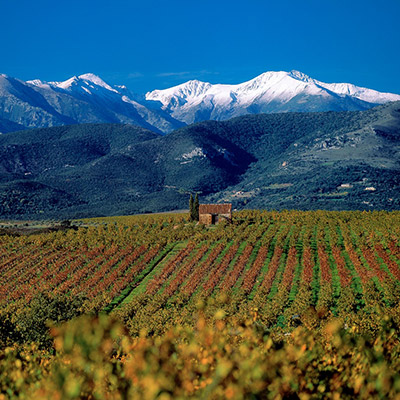
Foothills of the Pyrenees
Cool, higher-altitude zone with frequent precipitation. The deep calcareous clay soil lends opulence, finesse and richness to the wines. The schistous terroirs around Saint Paul de Fenouillet give added elegance to the wines.
Black fruit coulis, notes of spices and wild Mediterranean herbs. The wines hailing from this terroir: Grenache rouge, Grenache-Syrah-Mourvèdre, Pinot noir
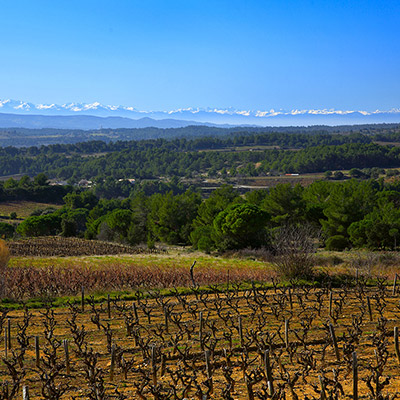
Foothills of the Montagne Noire
In the causses (limestone plateau) zone, the soil consists of alternating limestone and limestone marls. Sandstone marls are found on the slopes. This area is very dry with significant water shortages in the summer. High heat during the day is tempered by cool nights for freshness and spiciness in the wines.
Notes of pepper, violet and liquorice (Syrah); notes of wild Mediterranean herbs and spices (Mourvèdre). The wines hailing from this terroir: Syrah, Mourvèdre rouge, Grenache-Syrah-Mourvèdre, Cabernet-Merlot
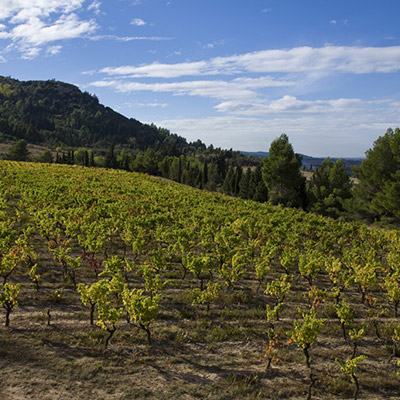
Central Corbières
Dark soil composed of molasse deposits and deep clay. The vines are deeply rooted. This terroir lends complexity to the wines.
Spices, very ripe red and black fruit, wild Mediterranean herbs, balsamic notes. The wines hailing from this terroir: Mourvèdre rouge, Syrah
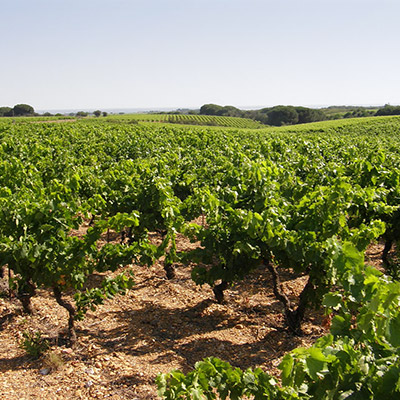
Slopes of the Gard Valley
Hot Mediterranean climate tempered by cool, damp nights and the Mistral wind that aerates the vine leaves, keeping them dry and healthy which is conducive to organic viticulture. Rounded stones on the surface store heat from the sun during the day and return it to the soil at night, promoting optimal ripening of the grapes and resulting in wines that are bursting with fruit.
Black fruit (Merlot) Pear (Chardonnay). The wines hailing from this terroir: Chardonnay bio, Merlot bio
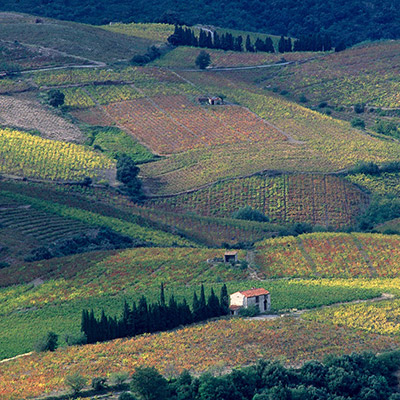
Slopes of the Orb Valley
Calcareous clay soil. Higher-altitude terroir with cool nights. Grapes are extremely ripe resulting in wines that boast velvety tannins, complexity, richness and roundness.
Spices, black fruit coulis (Cabernet Sauvignon, Merlot) Roundness, ripe exotic fruit. The wines hailing from this terroir: Sauvignon blanc, Roussanne, Marsanne, Chardonnay, Viognier, Syrah, Merlot, Malbec, Cabernet Sauvignon
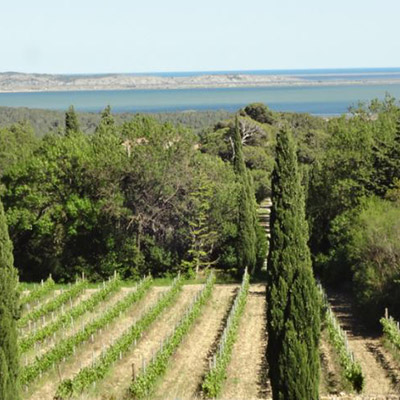
Bages lagoon
Ancient limestone with alluvial deposits from the Aude River. Alternating soil profiles: flat stones, red earth containing iron oxide, marls, sandstone, etc. These soils lend opulence and richness to the wines.
Spices, notes of wild Mediterranean herbs and incense (Mourvèdre). The wines hailing from this terroir: Grenache-Syrah-Mourvèdre, Mourvèdre rouge
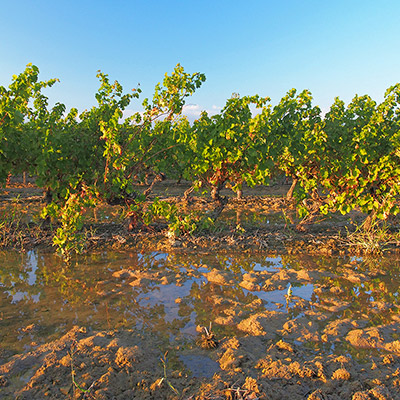
The dried-up marsh of Marseillette
An atypical terroir! This depression, formed by the extremely violent winds that prevailed during the Mesozoic Era, filled up with seawater that retreated several million years ago, leaving a 2,000-hectare salt marsh. The soil has good filtering ability; it is light and sandy, and is unique in that it is salty. Therefore, in order for the land to be used for farming, the marsh had to be drained and is regularly desalinated by a submersion process in which the water that infiltrates the soil leaches out the salt. The light, sandy soil along the edge of the marsh combined with irrigation allows the grapes to preserve their pleasing freshness, while the summer heat trapped within the basin promotes early ripening of the grapes.
Black cherry, spicy notes, blueberry, blackberry (Malbec) Grapefruit, citrus, boxwood (Sauvignon); pear, white flowers (linden) (Chardonnay); pear, apricot, peach (Viognier). The wines hailing from this terroir: Viognier, Sauvignon blanc, Pinot Gris, Chardonnay-Viognier, Malbec
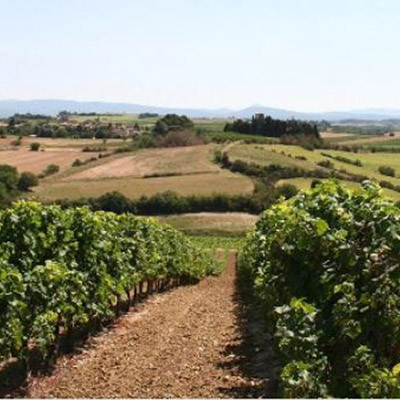
Western Aude department
Cool, deep calcareous clay soil. Oceanic influences result in fresh, mineral wines.
Sundried cherry tomatoes, red bell pepper (Cabernet Sauvignon) Pear, flint, minerality (Chardonnay); boxwood (Sauvignon blanc). The wines hailing from this terroir: Chardonnay, Sauvignon blanc, Malbec, Cabernet Sauvignon
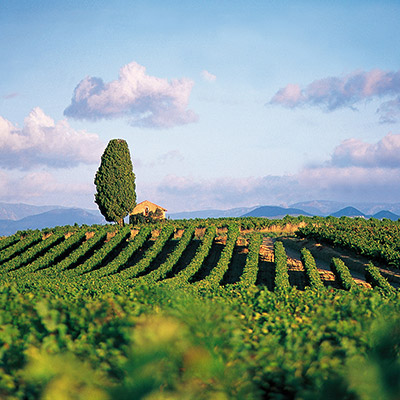
upper aude valley
A higher-altitude terroir that contributes freshness and minerality to the wines. Calcareous clay soil.
Red fruit (Pinot noir) Citrus, flint (Sauvignon blanc); lemon (Chardonnay).
The wines hailing from this terroir: Chardonnay, Chardonnay-Viognier, Sauvignon blanc, Méthode traditionnelle, Pinot noir
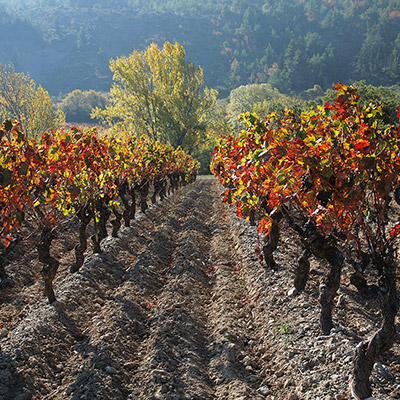
mount alaric
Located at the foot of Mount Alaric with alluvial soil at the bottom and stony limestone soil higher up. This terroir lends roundness and complexity to the wines.
Black fruit (cassis, blackberry), liquorice, notes of pepper and wild Mediterranean herbs (thyme, rosemary). The wines hailing from this terroir: Carignan, Grenache rouge, Syrah
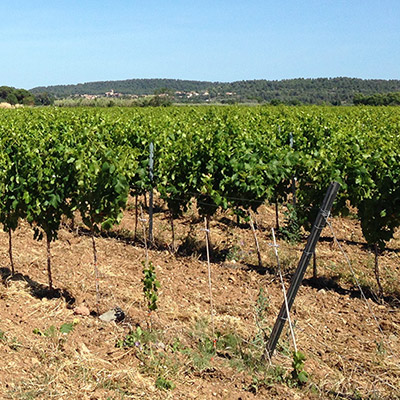
the aude river plain
Calcareous clay soil. Alternating terraces composed of rounded stones, sandstone, limestone, and layers of marl. This very hot zone ensures that the wines are endowed with good length and structure.
Notes of black fruit and spices Tautness, length. Fresh fruit, citrus Tautness, red fruit. The wines hailing from this terroir: Chardonnay, Marsanne, Mourvèdre rosé, Cabernet Sauvignon, Cabernet-Merlot, Carignan, Grenache rouge, Grenache-Syrah-Mourvèdre, Merlot, Pinot noir
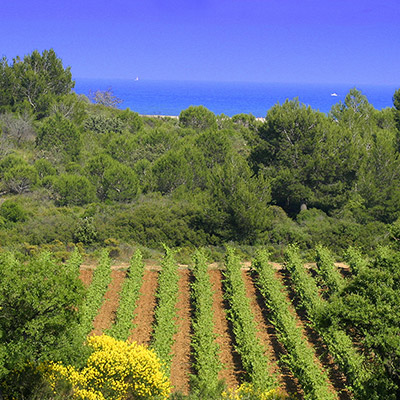
Coastal region near Béziers
Calcareous clay soil, with sandy zones. Deep, well-drained soil composed of alluvial deposits. The grapes from this zone lend warmth, richness, opulence and roundness to the wines, while proximity to the sea contributes freshness and minerality.
Very ripe black fruit (Merlot) Peach (Muscat sec) Grenadine. The wines hailing from this terroir: Muscat sec, Cinsault rosé, Merlot, Merlot Bio,
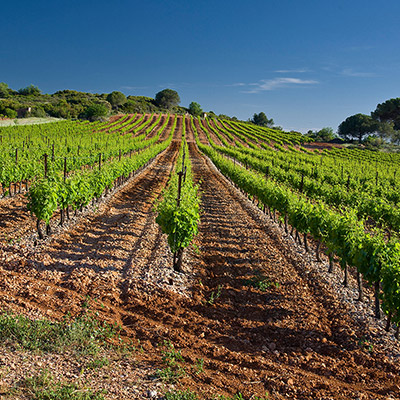
The Hérault Valley’s mid-slope vineyards
Lean, calcareous clay soil. This hot zone, under the influence of the Mediterranean Sea, promotes good ripening of the grapes that lend warmth, opulence and richness to the wines.
Ripe black fruit Fresh fruit on the nose and roundness on the palate Fresh fruit on the nose and roundness on the palate. Vins issus de ce terroir : Viognier, Pinot Gris, Muscat sec, Marsanne, Cinsault, Clair de Gris, Clair de Rose, Pinot noir, Mourvèdre rouge, Grenache rouge, Merlot
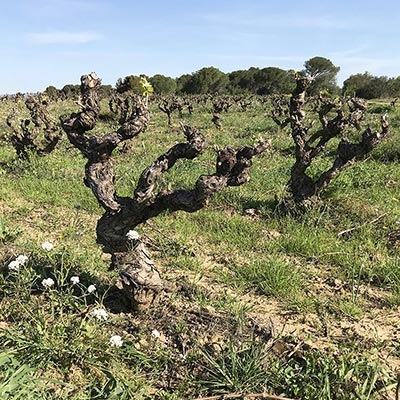
Le Beillou
Plot located north of Marseillette, in the southwestern Minervois on a sort of plateau at the bottom of which there is a stream. The soil is made up of layers of clay interspersed with highly eroded rocky limestone outcrops. The very old – over 100 years – goblet-trained pruned Carignan vines are not trellised, and are planted “Narbonne style” (1.5 m x 1.5 m). The roots of these old vines delve deep down in search of the water they need to ensure slow, even ripening of the grapes which brings out all of their potential.
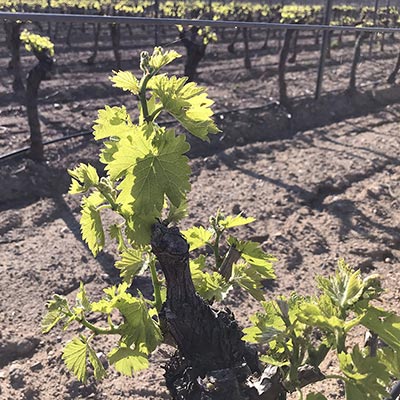
Les Traverses
Plot located north of the village of Sainte-Valière, in the eastern Minervois appellation, on a gentle slope that benefits from full southern exposure and whose rows of approximately forty-year-old vines, run east-west. The vines are severely pruned, goblet trained and trellised. The gravelly, sandy calcareous clay soil is well aerated and relatively lean, which is perfectly adapted to the Mourvèdre grape. A drop-by-drop irrigation system ensures that the vines never suffer from lack of water. The combination of southern exposure and moisture in the soil provides ideal conditions for the grapes to reach optimal maturity as they can ripen without any shocks or stress and produce perfectly balanced grapes.
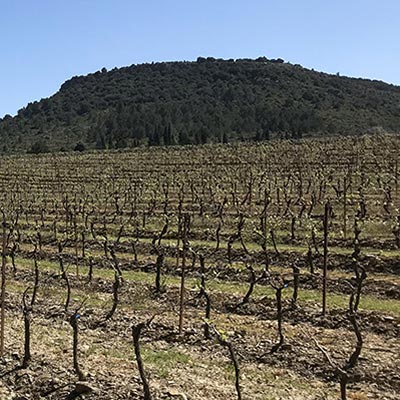
Vallée de la Bretonne
Plot located southeast of the village of Monze, in the northwestern Corbières appellation in the mountainous “Montagne d’Alaric” terroir, at an altitude of 170 m. The valley is lined with steep mountains whose summits reach over 500 m in altitude. The vines are planted at the foot of Mount Alaric on a gentle south-facing slope along the La Bretonne stream. The soil is composed of white alluvium at the bottom and stony calcareous soil higher up due to scree from the limestone parent rock that makes up Mount Alaric. The vines are relatively young (20 years old) and are cordon pruned and trellised.
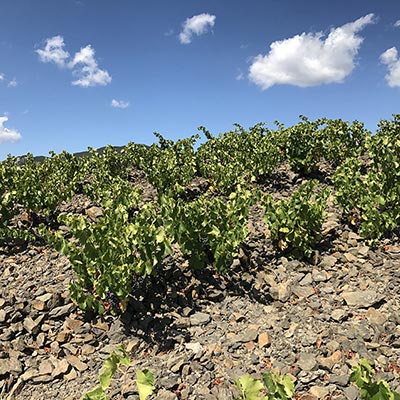
Vallée de la Boulzane
Plot located on a stony ridge northwest of Saint-Paul-de-Fenouillet, in the Haut Roussillon, at an altitude of approximately 320 m. The soil is lean and arid, composed of incredible stony black schist that requires the vines to plunge their roots deep down. The goblet-trained Grenache vines are over 8o years old. Although they are small and not particularly robust, they thrive in the stony soil without any stakes or trellising. Each vine stock produces a mere 2 to 3 bunches but the grapes boast incredible concentration. The dry conditions and altitude maintain their acidity.
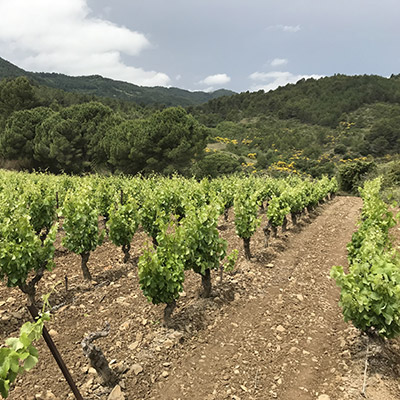
La Lauze du Moulin
One of our own plots located in the northwestern Corbières region, at the foot of Mount Alaric. The goblet-pruned, trellised vines grow on a gentle, south-facing slope. Gravelly calcareous clay soils lend the wine finesse along with rich aromas and flavours.
sélection parcellaire
Our “Sélection Parcellaire” wines:
when the Languedoc’s terroirs take grape varieties to new heights!
“These exceptional wines are sourced from some of the Languedoc’s most remarkable plots. They result from the subtle alchemy between a Terroir, a Vine, a Varietal and Human intervention. Succeeding in reaching this unique balance is like squaring the circle for us!”
As an exception within the Les Jamelles family of wines, each of the four cuvées in the “Sélection Parcellaire” range comes from micro-terroirs – unique plots that bring together all of the criteria that are necessary to craft great wines: well-managed vines with ideal exposure that are at their peak in terms of age and that are cultivated under the watchful eyes of particularly attentive growers. These wines symbolize the in-depth knowledge of the Languedoc’s terroirs that Catherine & Laurent Delaunay have acquired over the last 25 years, in addition to singular understanding of how each grape variety is best adapted to these terroirs.




